Letters from Lodi
An insightful and objective look at viticulture and winemaking from the Lodi
Appellation and the growers and vintners behind these crafts. Told from the
perspective of multi-award winning wine journalist, Randy Caparoso.
12 fantastic Lodi buys that take you from the realm of the senses into heights of the intellect
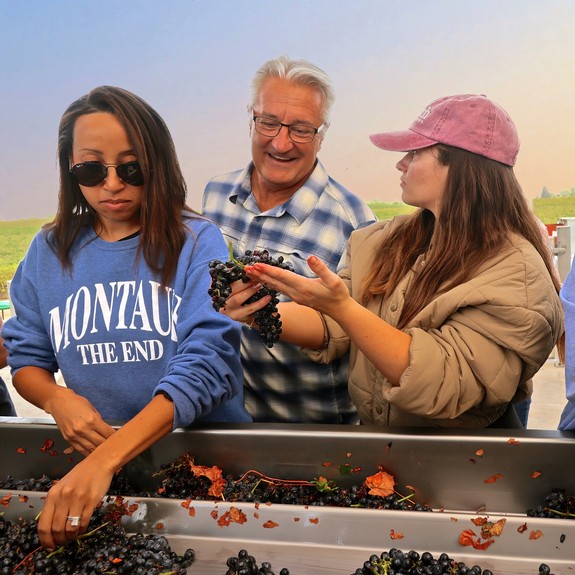
Visiting wine journalists on the grape sorting line at Lodi's Bokisch Vineyards.
"Wine, women and song... why reinvent the wheel?" That's the writing on a wall I once saw in Las Vegas' Caesars Palace. While there was undoubtedly wine and singing aplenty in the historical Caesar's era, a little reading shows that the expression first became popular in Germany, during the early 1800s. Aren't you glad you know that?
It is also good to know that through good times and bad, since before the days of the Romans, we have always had wine. It was, I think, Robert Mondavi who pointed out that the civilizing attributes of wine have been known since, well, the beginning of civilization.
Mr. Mondavi was a pioneer of the modern day California wine renaissance. There were numerous others, of course, and their collective impact was so huge that we can now say, here at the start of 2025, that American wines are far, far better than ever before.
These are great times indeed for lovers of wine and, yes, women, men and song.
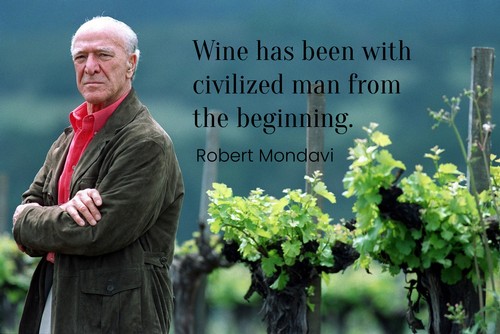
There is one more thing wine aficionados have also always known: The finer the wine, the deeper the experience. That is to say, wine is the one drink capable of taking you from the realm of the senses into endless realms of the intellect. It is the thinking person's adult beverage. For years I could never figure out exactly how to convey this, until that movie Sideways (2004) came out and did it for everyone.
If you recall, it's in the scene where the characters Maya and Miles are talking about how she "got into wine." It helps, of course, that it's told by someone with the intense eyes and face of Virginia Madsen, an actor who will now always be associated with this passage:
MAYA: I suppose I got really into wine originally through my ex-husband. He had a big, kind of show-off cellar. But then I found out that I have a really sharp palate, and the more I drank, the more I liked what it made me think about.
MILES: Yeah? Like what?
MAYA: Like what a fraud he was. (Miles laughs). No, but I do like to think about the life of wine, how it's a living thing. I like to think about what was going on the year the grapes were growing, how the sun was shining that summer or if it rained... what the weather was like. I think about all those people who tended and picked the grapes, and if it's an old wine, how many of them must be dead by now.
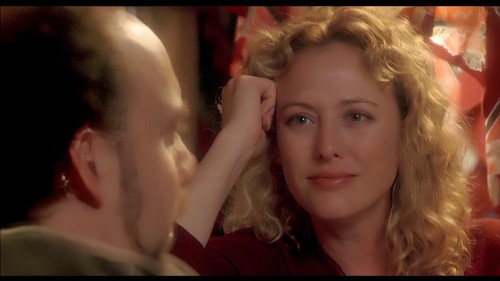
Virginia Madsen, playing the role of Maya in the 2004 movie Sideways.
I love how wine continues to evolve, how every time I open a bottle it's going to taste different than if I had opened it on any other day. Because a bottle of wine is actually alive⏤it's constantly evolving and gaining complexity. That is, until it peaks, like your '61, and begins its steady, inevitable decline. And it tastes so f--- good.
Maya's experience is exactly why wineries, and entire wine regions, have become the most popular vacation destinations in America; even in places like Lodi, where there are far more vineyards than tasting rooms. It's all about wine lovers fanning out across the country, looking for that same mystical connection between what is sipped from a glass and what is picked from the vine.
This is the new celebration of "wine and song," although admittedly, many wines no longer go for a song⏤more like an arm and a leg. Many of the finest wines, of course, are jacked up because of scarcity and hype. If a wine has earned a lofty reputation, and there are a lot more people than number of bottles who want it, naturally you see the $100, $200 or even $1,000 price tags.
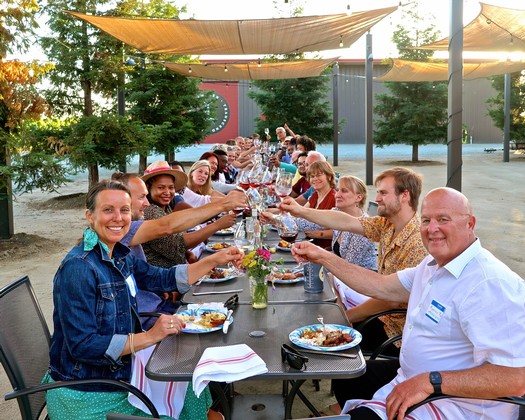
Lodi vintners and visitors toasting at Acquiesce Winery.
It is almost ironic, however, that appreciation of wine has always been purely a matter of taste; no different than the music we choose to listen to, the books we read, the clothes we wear, or anything else measured by personal preference rather than objective levels of quality.
The fact of the matter is that many of the $10, $20 or $30 wines of today are so good and compelling, there is no way that wines costing over 10 times more give 10 times more pleasure or intellectual satisfaction. $100 bottles are priced as such because of rules of supply and demand. Yet more than ever, In today's market, price has less to do with actual quality, and there are more high quality wines than ever.
Particularly in Lodi, which grows numerous wines that are considered "value" priced by today's standards ($30 or less), yet are still utterly fascinating and fulfilling on all sensory levels.
Lately we have been talking a lot about the current status of the entire wine world in terms of the global oversupply of grapes and excess wine production⏤circumstances that have had a particularly onerous impact on Lodi, America's largest winegrowing region (see Sobering thoughts... the state of the American wine industry).

Tasting at Lodi Wine Visitor Center. Stephanie Russo.
Together with recent declines in consumer consumption, this has created an imbalance of supply over demand that has kept prices at bay despite ever-increasing costs of everything from grape growing and wine production to packaging and distribution.
Make no mistake, however, suggested retail prices of wines in Lodi, and everywhere else in America where wine is made, has increased by some 10% to 25% (depending upon brands and circumstances) just over the past two years. Otherwise, there is still an endless number of fantastic buys to be had out in the ultra-competitive retail and online market.
Overall, in fact, I'd have to describe today's market as such: In terms of sheer quality of what you get for your money, it's still a buyer's market. Wines are better and more interesting than ever relative to their costs, despite increasing prices.
A dozen of Lodi's biggest bangs for the buck
Lodi epitomizes the word value mainly for two reasons: 1) It's a fantastic place to grow grapes, and 2) the viticulture and artistry going into many of its wines are impeccable, on the par with the finest in the world.
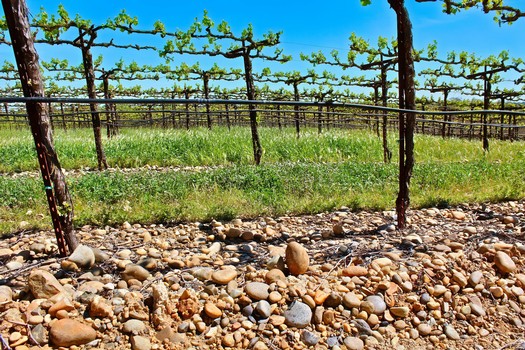
Petite Sirah cultivated on the rocky hillside of Ironstone Vineyards' Teichert Ranch in Lodi's Sloughhouse AVA.
That said, for starters, a good dozen wines that are so good, they could be described as every bit as "alive" or impactful as Maya's experience of wine in Sideways:
2021 Ironstone Vineyards, Lodi Petite Sirah ($16)⏤Year-in and year-out, one of Lodi's best buys in terms of pure intensity and complexity of the grape's varietal spice, albeit without the excessive alcoholic weight or oakiness that make most of California's Petite Sirahs more of an acquired taste. A red wine anyone could love.
2024 Klinker Brick Winery, Lodi Albariño ($17)⏤Even peripheral followers of Lodi are now well aware of the fact that Albariño, a grape indigenous to Spain, grows effortlessly in the region's Mediterranean climate—as if it originated at the edge of the California Delta—and this bottling is one of the best, bursting with all the mineral, citrus and nuances of fresh lavender anyone would want in the grape.

Oak Ridge Winery head winemaker Laura Chadwell Durham.
2022 1906 Vintners (by Oak Ridge Winery), Lodi Fumé Blanc (Sauvignon Blanc, $16)⏤This is a crackling dry "Fumé" style of Sauvignon Blanc; meaning, it sees significant barrel aging (7 months in French oak), which adds slivers of vanilla and sumptuous texturing to the otherwise citrusy crisp, tropical scented varietal profile. And at this price, and out and out steal.
2023 Peltier Winery, Lodi Vermentino ($18)⏤Vermentino, in case you don't know, produces some of the world's most profound, and transparent (i.e., reflections of their place of origin), white wines, and this brand has has already been proven to be among the absolute best (garnering a Grand Gold at a recent Vermentino International Competition in Italy). What's more phenomenal is the price of this sleek, seamless combination of fruit, minerality and Lodi sun.
2021 Sixth Sense (by Michael David Winery), Lodi Syrah ($18)⏤While it was good to be one of California's pioneers of Syrah (first planted in Lodi by the Phillips family in 1982), by the early 2000s the market for anything called "Syrah" was practically dead. So the two Phillips brothers did something clever⏤they packaged their varietal Syrah as "Sixth Sense" (after the popular 1999 movie of that name), and it clicked. Since then, they've kept the same world-beating price, while making it, almost unbelievably, better and better each year, with all the violet, tobacco-laced perfume and silkiness everyone loves in the varietal.
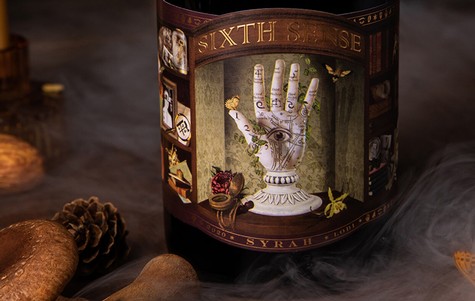
2022 St. Amant Winery, Mohr-Fry Ranch Lodi Alicante Bouschet ($24)⏤Alicante Bouschet's cachet is that it is a teinturier⏤one of those rare wine grapes in the world possessing as much color in its pulp as in its skin (almost all red wine grapes have clear colored flesh). It also makes an intensely sturdy, fleshy red wine that you can literally sink your teeth into. To paraphrase Jimi Hendrix, are you experienced? Not until you've tasted this Lodi grown wonder.
2022 Perch Wine Co. Lodi Kestral Red ($25)⏤Nowadays, many of the country's most acclaimed wines are blends, not varietals. Case in point, this unerring blend of Carignan (mostly), Zinfandel, Cinsaut and Petite Sirah, crafted in a "natural" style (native yeast fermentation, no filtration, neutral barrels, et al.) to practically scream its Lodi heritage⏤ringingly bright, pure, lush, supple, pervasive spice, breathing a subtle yet distinctive earthiness.
2020 Oak Farm Vineyards, Lodi Barbera ($25)⏤Lodi old-timers recall when, during the 1970s, big producers such as Gallo, Martini and Sebastiani began contracting growers to plant Barbera because of this Northern Italian grape's penchant for producing zesty, acid driven red wines, perfect for generic blends, and just as good for stand-alone varietal bottlings. The grape still thrives in the region's Mediterranean terroir, producing svelte, savory, impeccably balanced wines such as this certified sustainable estate grown bottling.

Oak Farm Vineyards winemaker Marilia Nimis-Schrader.
2021 Mettler Family Vineyards, Lodi Cabernet Sauvignon ($25)⏤This varietal has been the Mettler Family specialty for 25 years. More than that, it's become a paradigm of the phenomenal values grown in the appellation; as rich, sumptuous and multifaceted as any American wine made from this classic grape.
2023 LangeTwins Family, River Ranch Vineyard Jahant-Lodi Aglianico Rosé ($27)⏤One of a dozen and a half vineyard-designated specialty wines produced by this grower-producer, acclaimed for its sustainable leadership. It also has everything today's lovers of dry rosé look for⏤lightness, a touch of mineral, and delicately floral rather than annoyingly tutti-fruity qualities⏤plus a little something extra. Namely, nuances of licorice and the racy acidity specific to this unique, and downright ancient (going back to Roman days!), grape.
2023 JSL Wines, Manna Ranch Mokeulmne River-Lodi Marsanne ($30)⏤Handcrafted by the winemaker of Klinker Brick Winery under his own label, this varietal bottling of Marsanne exemplifies why "Rhône" grapes are perfectly adapted to Lodi's terroir. It is phenomenally pure⏤an essence of the edgy lemon skin and floral character of the grape⏤while packaged in an energetic, silky viscosity. Bang!

JSL owner/winemaker Joseph Smith.
2020 Seis Soles Wine Co., Natural Ferment Clements Hills-Lodi Tempranillo ($30)⏤The house style of this one-man brand is one of unrepentant smoke-of-oak and round, layered yet bold, brazen fleshiness⏤sensory qualities designed to appeal to Hispanic/Latino consumers. Be that as it may, these exact qualities also appeal to countless other wine lovers, and the meaty, supple character typifying the Tempranillo grape just adds to an overall sense of exhilaration.
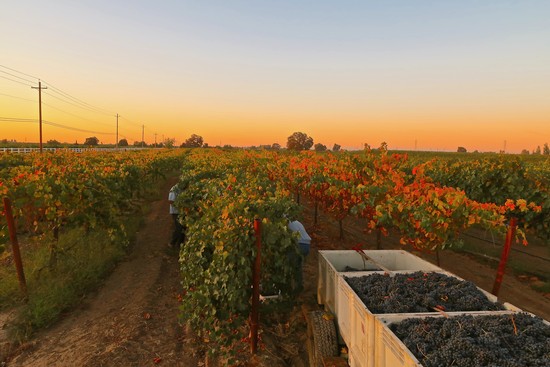
Tempranillo harvest in Anaya family's Potrero Vineyard in Lodi's Clements Hills, source of the Seis Soles "Natural Ferment."